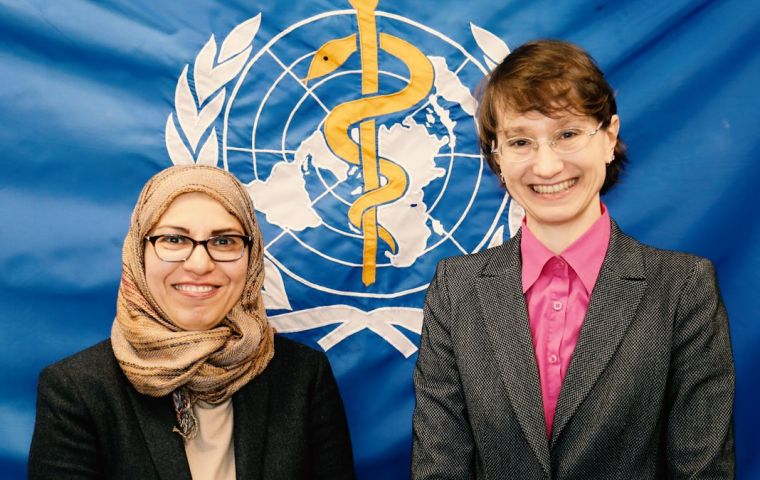MercoPress. South Atlantic News Agency
International Childhood Cancer Day 2019
 “Many countries are unaware of the extent of the childhood cancer burden,” says IARC Director Dr Elisabete Weider pass (Right)
“Many countries are unaware of the extent of the childhood cancer burden,” says IARC Director Dr Elisabete Weider pass (Right) Each year, an estimated 215 000 cancers are diagnosed in children younger than 15 years, and about 85 000 cancers in those aged 15–19 years. These estimates are based on data collected by the International Agency for Research on Cancer (IARC) from population-based cancer registries around the world.
Cancer remains rare in children. In high-income countries, 80% of patients can be cured. However, in low-resource settings, survival rates are only about one quarter those in high-resource settings. This is due to a lack of awareness among health professionals, as well as a lack of efficient medical infrastructure and diagnostic and treatment facilities. Hence, country of residence is the best predictor of outcome for children with cancer.
Compared with adults, children are affected by different types of cancer. Almost half of childhood cancers are cancers of blood cells (leukaemia and lymphoma), and the most frequent other malignancies are tumours of the central nervous system and tumours that develop from embryonic tissues.
To help better understand and fight childhood cancer, IARC has joined the recently formed WHO Global Initiative for Childhood Cancer.1 The Global Initiative seeks to reduce inequalities in access to diagnosis and in quality of treatment, and thus improve treatment outcomes for all children, especially those living in countries with limited resources.
High-quality data on childhood cancer incidence and survival are critical to better understand and combat the disease. However, the lack of infrastructure and high-quality cancer registries in many low-income countries means that data describing the burden of childhood cancer are scarce. For example, information on cancer incidence is available for only 5% of the total population of children in Africa, and survival data are available for an even smaller percentage of the child population.
“IARC has extensive expertise in supporting high-quality cancer registries around the world,” explains IARC scientist Dr Eva Steliarova-Foucher. “The Agency will offer valuable technical support to help countries build their information systems and use data on cancer incidence, survival, and mortality for cancer control planning, monitoring, and evaluation.”
Within the framework of the Global Initiative, IARC will lead the way in identifying barriers and challenges to cancer registration, and will recommend approaches to improve data quality in existing registries, specifically within the child population.
IARC is also contributing to the evaluation of the costs of the actions needed at the national level, along with the costs of the absence of action. The Global Initiative is expected to increase the information base for decision-making and improve research competency at the national and international levels.
“Many countries are unaware of the extent of the childhood cancer burden,” says IARC Director Dr Elisabete Weiderpass. “The lack of high-quality data prevents governments from identifying efficient public health policies and responding to the needs of the patients.”
The Global Initiative has the aim of reaching a survival rate of at least 60% for children with cancer globally by 2030. This target represents an approximate doubling of the current survival rate, and reaching it will save 1 million lives over the next decade.




Top Comments
Disclaimer & comment rulesCommenting for this story is now closed.
If you have a Facebook account, become a fan and comment on our Facebook Page!